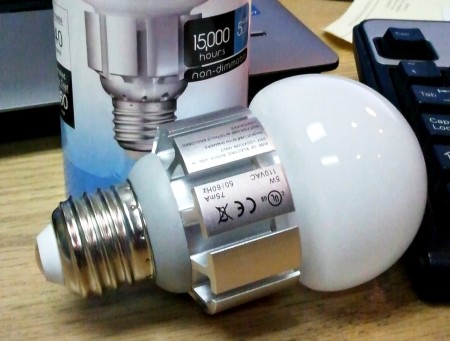 Decisions made throughout the Design+Build process can incorporate elements of sustainability and energy efficiency. As a company we always seek to present options that reduce a project’s impact on the planet through material choices, passive design strategies, and efficient building systems. Some of these may involve substantial investment, but one option stands out as a simple and cost-effective choice, with an average payback of approximately one year: LED bulbs.
Decisions made throughout the Design+Build process can incorporate elements of sustainability and energy efficiency. As a company we always seek to present options that reduce a project’s impact on the planet through material choices, passive design strategies, and efficient building systems. Some of these may involve substantial investment, but one option stands out as a simple and cost-effective choice, with an average payback of approximately one year: LED bulbs.
LED bulbs use approximately 80% less power and can last up to 25 times as long as an equivalent incandescent bulb.
The formula for determining electricity usage is:
wattage x hours used ÷ 1000 x price per kWh = cost of electricity
Take for example a kitchen renovation with 8 recessed can ceiling fixtures. Each fixture takes one “PAR 30” style bulb, and the baseline efficient halogen PAR-30 bulb (equivalent light output as a standard incandescent 75-watt bulb) consumes 53 watts of electricity.
Assuming it is on for an average of five hours per day, the kitchen ceiling fixtures will consume 53 watts x 8 bulbs x 5 hours x 365 days / 1000 = 774 kWh per year. At $0.11 per kWh, the baseline cost for running the kitchen lights with incandescent halogen bulbs is approximately $85 per year.
Switching to the equivalent LED bulbs (actual usage: 14 watts) results in an annual operating cost of approximately $22.50.
The difference in operating cost between the halogen and LED bulbs amounts to an annual savings of $62.50. Over the life of the LED bulb (approximately 25,000 hours), not taking inflation into account, the savings in electricity cost alone in the kitchen fixtures will be $875.
There are few “renovation” projects as simple as changing a light bulb. It is easy, cost effective, and can be incorporated sensitively into a larger project at very little effort.